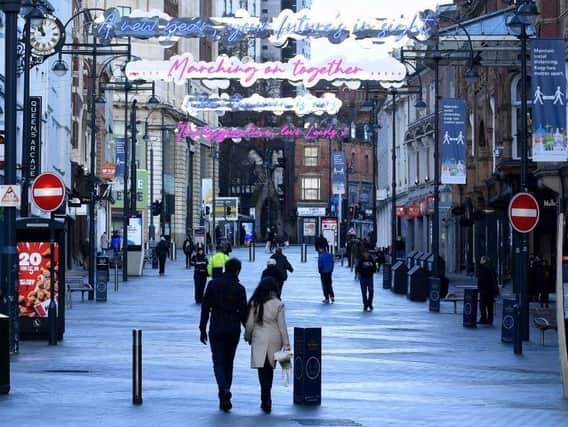Why thinking about what we wear is essential for a better environment - Josie Warden


Although most of us are taking steps to reduce the amount of plastic we use in our daily lives, few people realise that two thirds of our clothes are made from the same non-renewable resources that make plastic packaging.
Whilst that new top can seem harmless, its true impacts are not. From the vast carbon emissions caused by the energy and chemicals used in its production, through the hundreds of thousands of microfibres that are released in every wash and to the further emissions caused in landfills and incinerators.
Advertisement
Hide AdAdvertisement
Hide AdIn 2015, the carbon emissions from the production of one fibre, polyester, were equivalent to those of Germany and, though tiny plastics might be invisible to the eye, they remain in our environment. These fibres have reached even the most remote parts of the Arctic and are increasingly turning up in the food we eat and even the air we breathe.
Recycling isn’t the answer. Only a tiny fraction of clothing can be recycled. Instead, every second, a truckload of clothing is burned or landfilled. In all, our clothes are responsible for 10 per cent of the world’s carbon emissions. As we fight climate change, what we wear really matters.
It didn’t used to be like this. But over the last 20 years the use of these man-made fibres has more than doubled, outstripping natural fibres like cotton and wool, which we more usually associate with clothing.
It’s no coincidence that the boom in fast fashion has come together with this rise in fossil fashion. We’re buying more clothing than we ever have, and the fabrics are cheaper, though only for the brands.
Advertisement
Hide AdAdvertisement
Hide AdWe, the public, bear the costs of the pollution and the waste. People support moves to curb plastics, from the bag tax to bans on single-use items like straws. Our recent research shows that a large majority (76 per cent) of us don’t want plastic in our wardrobes either. And yet we also found that many of us don’t realise just how much of our clothing it makes up.
As such, we’re recommending that government explore a tax on virgin plastics in fashion and investigate what bans on marketing could do to shift brand behaviours. Brands themselves should look to phase out their reliance on plastics and consumers can help by asking for more transparency and plastic-free clothing. Ultimately, we need to work from all directions to make change.
Yorkshire has a rich heritage in textiles and garment manufacturing and is still home to world-class industry. Now is the time to be visionary leaders again. From farmers to manufacturers, designers to retailers, we can build local supply chains, which benefit local people and economies, and help us to meet our climate commitments.
There are great examples of organisations and people already working to make this a reality. Community Clothing and HebTroCo are producing clothing locally and creating jobs; Yorkshire Textiles and Fibreshed are supporting and promoting high- quality wool and other local fibres; AW Hainsworth is building on centuries of innovation to be a business fit for the next generation – to name only a few.
Advertisement
Hide AdAdvertisement
Hide AdOver the last few months we’ve been working with Zero Waste Leeds and local citizens on Leeds Fashion Futures, a project exploring what sustainable fashion in the city could be like, including finding ways to enable people make better choices, to buy second hand, to reuse, repair, care and share clothing. The potential is enormous.
We’re in a time of change. Our high streets are struggling, jobs look different, we’re feeling our way on trade and agriculture post-Brexit, and the pressure to address climate change is mounting. Thinking about what we wear might not seem like a pressing issue right now, but I think it is.
After all, fashion says a lot about who we are, what we care about and how we want to live.
Through government action, innovation from business and demand from savvier consumers we can pull away from the unpopular, damaging path of fossil fashion and help to create a cleaner, healthier environment for all.
Josie Warden is head of regenerative design at the RSA, the Royal Society for arts, manufactures and commerce.